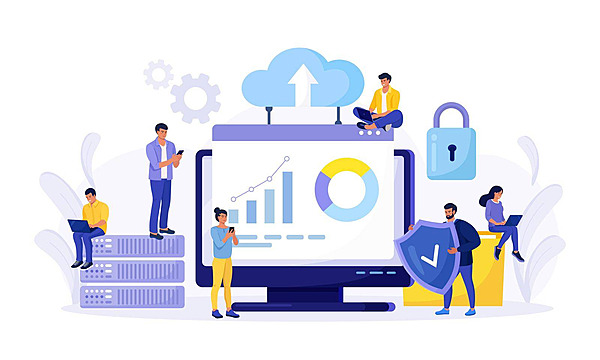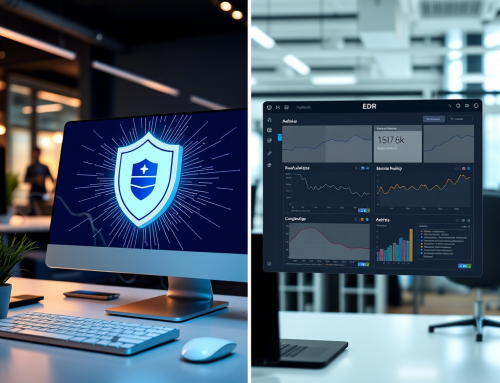Cybersecurity is a rapidly evolving field, where protecting digital assets is critical for organizations of all sizes. But with advancements in both threats and defenses, there is often debate over which approach to security is best. Should we rely on technology and tools, or focus on manual security alert analysis? What approach works better for job interviews, and do professionals really need to learn Digital Forensics and Incident Response (DFIR) manually?
This blog dives into these questions by exploring the roles of security tool analysts, examining the process of handling alerts without tools, and discussing their implications for career development and hiring. Read on to determine which approach aligns with your goals and how best to prepare for the evolving world of cybersecurity.
What is a Security Tool Analyst?
Security tool analysts are professionals who work with software and tools specifically designed to detect, manage, and respond to security threats. Their role revolves around leveraging automated systems and platforms—such as SIEM (Security Information and Event Management) solutions, EDR (Endpoint Detection and Response) tools, or intrusion detection systems—to analyze logs, monitor suspicious activities, and respond to security incidents efficiently.
Key Responsibilities of a Security Tool Analyst
- Configuring and maintaining security tools used for threat detection.
- Monitoring dashboards and analyzing alerts generated by security tools.
- Investigating flagged incidents to determine their impact and severity.
- Creating reports based on findings and providing recommendations.
Tools such as Splunk, QRadar, and CrowdStrike often form the backbone of their workflow, offering automation and insights critical to modern cybersecurity.
Advantages of Security Tools
- Efficiency: Tools automate repetitive tasks, allowing analysts to manage larger volumes of data in less time.
- Accuracy: Many tools detect intricate patterns that may be missed by manual observation, reducing the chance of human error.
- Scalability: Better suited for handling complex, large-scale networks with continuously growing traffic.
However, reliance on tools comes with its challenges, such as overdependence and a potential gap in understanding the deeper technical mechanisms behind alerts.
Security Alerts Without Tools: A Hands-On Approach
On the other hand, some cybersecurity professionals believe in adopting manual approaches to monitoring and analyzing security alerts. This involves sifting through raw logs, network data, and endpoint activity without the use of advanced software solutions.
Challenges of Working Without Tools
- Time-Intensive: Manually detecting, validating, and responding to alerts takes a significant amount of time.
- Prone to Errors: Relying solely on human judgment can lead to mistakes, especially under time pressure.
- Resource-Heavy: Requires deep expertise and consistent focus to manage alerts effectively.
That said, practitioners argue that this approach sharpens core skills, builds a better understanding of underlying systems, and helps professionals tackle situations where they don’t have access to tools.
The Argument for Manual Security Analysis
Despite its challenges, manual analysis provides a solid foundation in cybersecurity concepts. It ensures a professionals can work in tool-agnostic environments and allows them to rely on expertise rather than software alone.
Security Tools vs. Manual Security Alerts
When it comes to comparing the two approaches, several factors come into play, including efficiency, accuracy, and usability.
|
Factor |
Security Tool Analyst |
Manual Security Alerts |
|---|---|---|
|
Efficiency |
Highly efficient, especially for large-scale data. |
Time-consuming and less practical for high-volume analysis. |
|
Accuracy |
Tools reduce human error but require proper tuning. |
Deep understanding of systems minimizes false positives. |
|
Learning Curve |
Easier to adopt with proper training. |
Requires extensive technical expertise and experience. |
|
Scalability |
Easily handles enterprise-level networks. |
Limited by human capacity and resources. |
It’s clear that each method has its own strengths and weaknesses. For most organizations, the ideal approach is often a combination of both—a reliance on tools to handle efficiency and scale, paired with skilled professionals who can step in when tools fall short.
What Do Employers Look For in Interviews?
If you’re preparing for an interview as a security analyst, you may wonder which approach is more valued. The truth is companies look for a balance between technical proficiency with tools and a foundational understanding of cybersecurity concepts.
Skills That Stand Out in Interviews
- Tool Proficiency: Familiarity with popular platforms like Splunk, Palo Alto, or Elastic Security is almost always a plus.
- Problem-Solving: Hiring managers want to see how you solve problems when tools fail or alerts are ambiguous.
- Foundational Knowledge: A solid grasp of TCP/IP, intrusion detection techniques, and endpoint security matters as much as tool expertise.
Applicants often gain an edge by showcasing their ability to adapt—highlighting how they’ve used tools to solve real-world challenges while demonstrating their capability to analyze security issues manually when needed.
Do Professionals Need to Learn DFIR Manually?
DFIR (Digital Forensics and Incident Response) plays a critical role in addressing cybersecurity incidents. However, a common question is whether it’s essential for professionals to learn DFIR skills manually.
Pros of Learning DFIR Manually
- Deeper Insight: Understanding the “why” and “how” behind security alerts helps identify patterns and root causes effectively.
- Tool Independence: Professionals who train manually can perform investigations even without pre-configured software.
- Troubleshooting Complex Threats: Manual skills ensure readiness for incidents that may crash or bypass enterprise security tools.
Cons of Manual DFIR Learning
- Time-Intensive: Manual learning takes significant time and commitment, especially for professionals new to the field.
- Steeper Learning Curve: Requires hands-on experience with forensic tools, working logs, and protocol analysis.
While learning DFIR manually isn’t a strict requirement, it undoubtedly strengthens your capabilities, making you more prepared to handle advanced threats.
Choosing the Right Path
There’s no one-size-fits-all answer to which approach—security tools or manual alerts—is best. However, combining both is often the smartest strategy. By leveraging tools for efficiency and honing manual skills for handling complex issues, security professionals can achieve a well-rounded skillset.
For those starting their careers, focus on building a strong foundation in the basics of cybersecurity and gain hands-on experience with tools commonly used in the industry. At the same time, invest time in developing manual analysis skills, which will give you a competitive edge during interviews and in real-world scenarios.
Whether you choose to follow the path of a security tool analyst, explore manual processes, or dip your toes into both, remember to stay curious, keep learning, and adapt to the ever-changing cybersecurity landscape.





